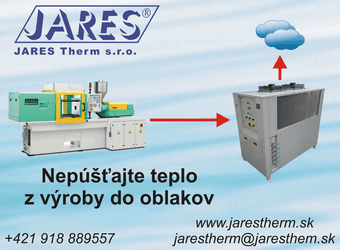Direct adiabatic cooling of industrial facilities by COLT CoolStream intelligent adiabatic cooling unit
Excessive heat gains in the manufacturing facilities have a negative impact on the performance of people and production equipment and ultimately the company's financial performance. One of the ways to improve the working environment and save operating costs is to use so-called adiabatic cooling.
Adiabatic cooling benefits from the exchange of circulating heat to latent heat during evaporization of water, while reducing the air temperature at the same time. The air temperature is lowered and the sensible heat is exchanged to latent heat needed for evaporation of water and formation of water vapour.
This air cooling principle has been used in the distance past. Frescoes from 2500 BC show clay jars filled with water that were used to cool the royal chambers. Primitive adiabatic cooling systems for buildings were also used in ancient Egypt and Greece. Probably the first air cooler based on adiabatic cooling was designed by Da Vinci in the 16th century. The cooler used a wheel that partially waded in flowing water. Adiabatic cooling became more common in the early 19th century, especially in the USA (textile industry). The adiabatic chamber was used in the construction of the National Theatre in Prague. The first hotel installation of adiabatic cooling was in 1916 (Adams Hotel, Phoenix).
Nowadays, direct adiabatic cooling is popular worldwide, especially in areas with dry and warm climate. Adiabatic cooling performs at its best in desert conditions with the air humidity critically close to zero. However, such places are generally unpopulated and water is a scarce and expensive commodity.
 |
|
| CoolStream S3 adiabatic cooling unit |
This does not apply for the temperate zone, which is very densely populated and water is traditionally plentiful. In central Europe, direct adiabatic cooling can be successfully used to cool buildings, especially industrial ones. For adiabatic cooling to work effectively sufficiently warm and dry outside air is required to allow a high degree of humidification. In our climate, wet bulb temperatures are below 21°C for most of the year. Higher wet bulb temperatures occur only approx. 0.4% of the time (in the time interval May to September). Statistically, there are only few tens of hours during the year when the outside air is too warm and humid that it cannot be effectively cooled adiabatically.
The second factor limiting the applicability of adiabatic cooling is the achievable outlet air temperature. This may be close to the so-called adiabatic cooling limit temperature, which is the same as the wet bulb temperature and depends on the outside air temperature and its humidity. The air temperature behind the adiabatic cooler is usually 1 to 3 degrees higher than the wet bulb temperature. Direct adiabatic cooling works only with fresh outside air which can be, in our conditions, cooled down by 8 to 12 °C.
Features’ brief overview:
Adiabatic cooling:
- convenient and efficient cooling,
- suitable for large premises with a high need for ventilation air,
- high cooling performance even in temperate climates,
- cooling capacity increases with increasing outdoor temperature,
- minimal power consumption, only for air conveyed by the fan,
- low water consumption due to the exceptionally high latent heat of vaporisation,
- physiologically pleasant conditions in adiabatically cooled rooms.
Use of adiabatic cooling
Direct adiabatic cooling is preferably used primarily in industrial buildings. 100% of fresh air is supplied, the air is cooled down by evaporation of water and at the same time moistened by adiabatic cooling. The incoming air is, of course, mixed with the indoor air and heated by heat gains. As a result, the humidity in the adiabatically cooled space is generally between 50-65%. A relative humidity of 50-65% is considered comfortable for occupants as well as is adequate for most materials, electrical or electronic components and production equipment. For industrial facilities with no need for precise temperature and relative humidity levels, direct adiabatic cooling is an interesting alternative to conventional mechanical cooling. However, it can occur that the installed technology cannot be exposed to 50-65% humidity. For such applications, direct adiabatic cooling is not suitable. However, it is always important to consider whether it is possible to create conditions that limit the negative impact of higher humidity and maximise the potential of direct adiabatic cooling.
 |
|
| Well designed positioning of CoolStream units, short ducting and efficient, thoughtful and comfortable distribution is an integral and important part of adiabatic cooling. |
Many concerns are related to possible condensation on the building envelope or on the production technology. However, it must be remembered that adiabatic cooling is only used in summer and the adiabatically cooled air is distributed into the space where the surface temperature of all objects is higher than the supply air temperature. In this situation, condensation does not occur. Condensation only occurs when the surface temperature is below the dew point temperature of the adiabatically cooled air.
Physical and technical principle of evaporative adiabatic cooler
On a suitable evaporating (desorption) medium that is wetted with water, a relatively large surface area is created for the evaporation of water. Outside warm air with relatively low humidity flows at a relatively low velocity through the medium and absorbs the water vapour evaporated from the large surface area of the wetted medium. Evaporation occurs directly from the surface of the medium. This process is regulated naturally and the amount of water that the flowing air is naturally able to absorb will actually only evaporate. At the same time, only the water vapour molecules themselves are evaporated, while the minerals contained in the water do not pass into the cooled air and remain in the storage bath below the evaporating medium. They are removed during regular water change cycles. The CoolStream adiabatic cooling system does not require any additional technical equipment or water treatments and uses regular untreated tap water.
CoolStream adiabatic cooling system:
- quality construction,
- all-aluminium cabinet,
- lightweight - easy transport, handling and assembly,
- design elements taken from advanced air handling systems,
- hygiene maintenance automatic system,
- regular cleaning and water change,
- significant reduction of scale deposition,
- minimised scheduled maintenance,
- meets the requirements of the VDI 6022 hygiene standard,
- extensive detailed technical and design documentation.
COLT CoolStream adiabatic cooling units
COLT CoolStream adiabatic chillers are world-leading in terms of function and operation. The CoolStream units have been designed using the company's many years of experience with direct adiabatic cooling technology.
The CoolStream units are made of aluminium sheet, which guarantees a long service life and good resistance to weathering and corrosion. The design of the unit is stable, without deformations when the unit is being exposed to sunlight or loaded by wind and snow.
The lightweight aluminium construction allows the units to be handled and carried by hand, making installation much easier.
The 3rd generation of CoolStream adiabatic cooling units currently available on the market is designed with the advantage of many years of experience and ongoing ideas implementation and direct adiabatic cooling technology improvements process, with an emphasis on the following important aspects of the cooling process:
- protection against water contamination,
- protection against air contamination,
- protection against scale deposition,
- easy and low cost maintenance.
Hygienic operation, easy and lowcost maintenance
As a result of the above measures, the automatic maintenance of hygienic operation is possible, which allows for a maximum reduction of maintenance requirements. CoolStream units are designed for efficient and hygienic operation. The COLT Cortiva control system takes over and puts in automatic mode a significant part of the periodic mandatory maintenance previously routinely carried out by the operator's staff. The automation continuously maintains the hygienic cleanliness of both the process water and the storage tank, and the appropriate water management design ensures optimum flow distribution and sufficient water in the desorption panels.
 |
|
| Easy removal of the side panels creates optimal service access to CoolStream units. |
Thanks to the sophisticated design, CoolStream units can be easily disassembled and cleaned. The units are designed with a smooth internal surface that effectively limits the build-up of dirt and minerals. The water desorption system is designed to be disassembled without the use of tools. No operational maintenance is required by the user during periods with cooling needs. COLT's service department offers and arranges regular professional maintenance and is also involved in its planning.
The combination of design features together with advanced automatic control makes the CoolStream adiabatic cooling system an efficient way to achieve comfortable conditions inside large and highly heat-loaded areas of production halls, where it is capable of eliminating large heat loads at low energy costs. It is a very efficient and economical way to achieve a temperature inside the production hall that is lower than the outside temperature.
-

Colt International, s.r.o.
Adiabatic cooling, industrial ventilation, hall cooling, fire ventilation, cooling units, equipment and machinery, air conditioning.
Without guide pillars and with electric drive for production optimization: ENGEL expands the victory series
21.3.2025 ENGEL is expanding its renowned range of victory injection molding machines without guide pillars by incorporating the previous e-motion TL model, now introduced as the victory electric. This innovative addition combines the advantages of guide...






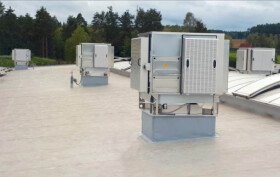


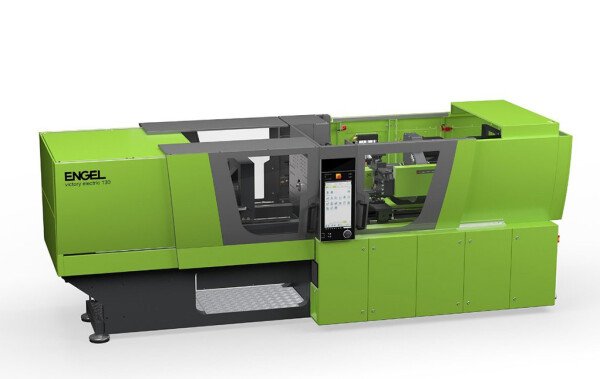
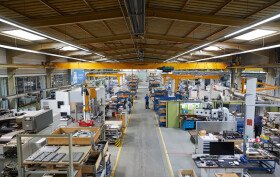
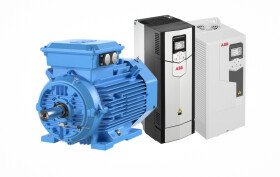
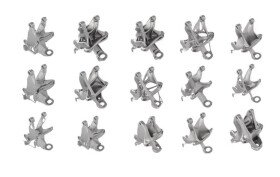
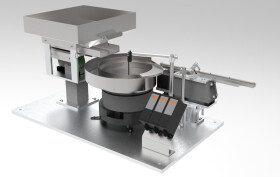
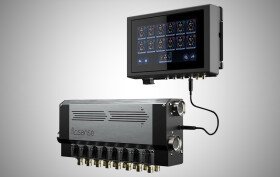

-jpg-280x250.jpg)



